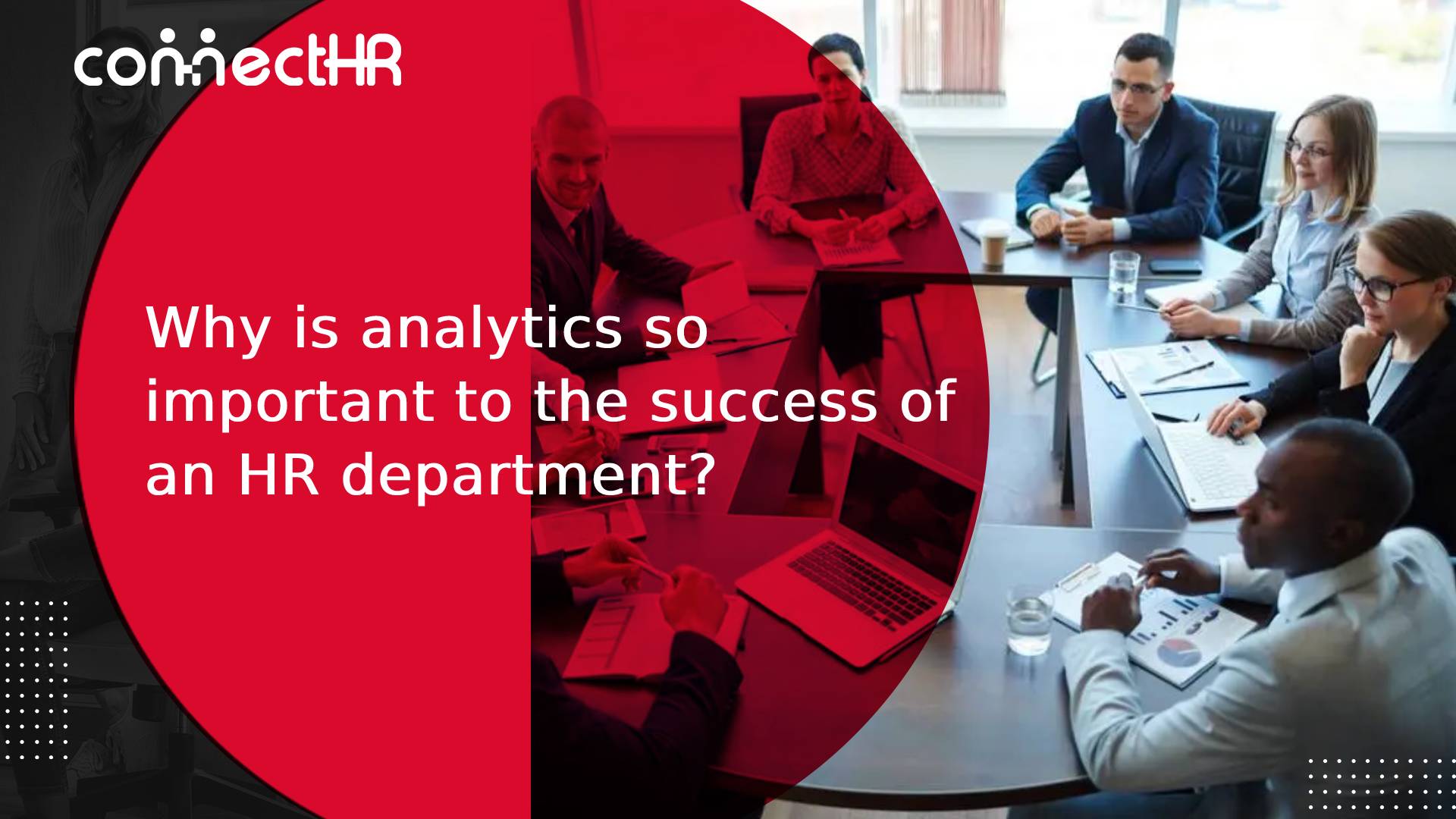HR professionals have begun to understand the relevance of people analytics as vital to the future of HR during the last decade. Companies currently manage a vast quantity of data through this department. HR analytics, when implemented wisely, has the potential to revolutionize how human resources functions.
In this article, we will discuss the significance of these analytics in the effectiveness of the human resources department. By handling this sort of information, the staff gains insights that enable them to contribute to the organization significantly. As a result, more excellent strategic workforce planning can improve the organization’s efficiency.
- What is HR analytics?
- What are the differences between people analytics and HR analytics?
- How important is the use of data in this department?
- What are the metrics that an HR analytics tool should manage?
- How many levels of analytics are in a company?
- Why is it beneficial for your company to use an analytics tool?
- Tips for the correct use of HR analytics
- How can we help you improve your company’s HR metrics?
1. What is HR analytics?
Before getting into the subject, we must clarify what analytics are. They are defined as the interpretation of data patterns that help decision-making and performance enhancement. HR analytics involves the collection, analysis, and reporting of HR data.
It enables your organization to measure the impact of a series of HR metrics on overall business performance. In addition to being able to make smarter decisions based on date. Traditionally, most decisions made in this department have been through intuition and assumptions.
HR teams made many of these judgments primarily based on previous experiences and facts and an eye toward the future. Using analytics is to look to the end, foresee occurrences, and be prepared. In a nutshell, prepare the organization and the HR department for the future.
Not only that but intelligent usage of analytics will result in a more profound understanding of employees and partners. Throughout the ongoing worldwide pandemic, the ability to use statistics in decision-making has grown to insignificance. As a result, these teams guarantee every move made to improve parts of the organization.
2. What are the main differences between people analytics and HR analytics?
More and more businesses realize that the key to their success is the people that make it up. As a result, dedicating some of human resources’ time and resources to knowing and understanding the staff is a genuine need.
In contrast to what has been described in the preceding paragraph, there is another word linked with analytics management: people analytics. People analytics is a data analytic tool that companies use to evaluate their personnel. Objective, accurate, and reliable conclusions may be formed using the gathered data and thoughtful analysis.
We must clear up any confusion between HR and people analytics. HR analytics collects and measures the performance of the HR team. Such metrics are solely beneficial to the Human Resources department. We must comprehend the seemingly endless breadth of people analytics with all this in mind.
These analytics intend to include HR, worker data, and customer insights. These analytics instill the mindset of monitoring and analyzing all of this data and weaving it together to improve corporate performance. They are not the exact phrase, although they deal with identical data.
3. How important is the use of data in this department?
Data is among the most valuable assets in businesses. In the last 2 years, the world collected nine times more data than in the previous two decades. As a result, it has grown to become one of the most significant resources in the commercial industry.
The increased volume of data is getting an effect on the entire company. CEOs must continually alter their firms to thrive in this digital era, learning new skills and talents. It impacts employees while the CEO’s environment transforms.
There is a rising expectation that workers will have a comparable experience at work as they do as customers. As a result, there is a demand for easily accessible, individualized data to help people make decisions to propel their professional growth. Unfortunately, HR data analytics‘ maturity in leveraging this data and insights to become a solid ally to the company is delayed.
Nonetheless, HR management may be entirely changed by HR data analytics. This is due to human resources’ inability to quantify and assess its success. Something that, on the other way, firm divisions such as marketing and finance do. You are involved in analytics when you begin to assess difficulties utilizing the data that has been collected.
4. What are the metrics that an HR analytics tool should manage?

One of the most challenging aspects of data collection is acquiring and analyzing high-quality data. Companies may accomplish this through the use of metrics. But what exactly are metrics? Are they crucial figures that assist firms in tracking the human capital and measuring the effectiveness of their efforts?
Measuring this type of information, what works well, what needs improvements, and so on, assists firms in determining their people strategy. A variety of indicators influences a company’s performance. You can indicate what data the organization requires when measuring these KPIs.
Some of the metrics most common that are useful for human resources management are:
4.1 Turnover
Turnover is the number of workers who leave a company throughout the year. When you integrate turnover data with employee performance measurements, analytics can help you differentiate the attrition of performers. Using HR analytics aids in the collection of data to detect trends of work performance and insights that suggest why people left.
These insights aid in developing new plans or initiatives to increase employee engagement levels.
4.2 Time to hire
This is the number of days between a job opening and an applicant signing a joining/offer letter. This indicator is quite helpful in determining the effectiveness of the recruitment process. People analytics assists recruiters in changing or modifying their recruiting approach to improve the employee experience. In addition to determining the time intervals when the majority of the period is spent.
4.3 Recruitment
Going through thousands of applications is not only stressful but also time-consuming. HR analytics allows for the rapid collection of data from various sources. Helping shortlist candidates with achievements and skills that match top-performing employees in the company. In this way, the company can hire better candidates.
4.4 Training cost per employee
The entire cost of training divided by the number of applicants trained yields this measure. These systems give data on employee performance, exam results, and transfer into positions following training. Lower performance may cause you to reconsider the value of training.
5. How many levels of analytics are in a company?
Companies should respect the levels of these analytics to accomplish proper human resources management through data. These solutions make use of both quantitative and qualitative data. In addition, companies study these topics using systems and modeling methodologies.
There are three types of analytics: basic, predictive, and multidimensional data. The organization will see a quality boost if all these levels are recognized and used. Following that, we shall describe what purpose each of these layers serves.
5.1 Basic analytics
They are descriptive data that demonstrate a specific component of human resources, such as absence statistics, turnover rates, and more. No analysis is performed beyond reporting or close monitoring across time at this phase.
5.2 Predictive analytics
Companies can use some HR analytics to forecast future conduct or trends. Employing data in this manner can assist HR departments in planning for future events, guaranteeing proper reaction. However, predictive analytics demands high-quality, robust data and specific technology and expertise to indicate data and situations.
5.3 Multidimensional data
They are a collection of several forms of data used to investigate concepts and comprehend the relationship between various activities. The association between leadership abilities data and engagement ratings exemplifies this level. This contributes to determining leadership effectiveness.
6. Why is it beneficial for your company to use an analytics tool?
It has become evident that the importance of HR analytics starts with data. Of course, as with any analysis procedure, it can get complex, but as previously said, modern tools and software can surely assist and help in the process. In this way, the HR team can concentrate on preserving the human aspect of the company’s management.
These are some of the benefits that the use of these analytical tools can bring to your company:
6.1 Data visualization
Numerous spreadsheets, digits, rows & columns, and manual calculations are no longer required. Most of the HR staff is motivated by the company’s human side rather than by numbers or paperwork. Thanks to data visualization, each element in human resources analysis may be readily displayed and interacted with.
Having clear visuals in the form of compelling charts and graphs allows the firm to develop a data story, which aids in their progress.
6.2 Improves employee performance
Building a positive working environment and ensuring staff has the resources to do their jobs effectively. HR analytics can assist in identifying companies that provide flex time and work-life balance. Companies build a better working environment by keeping employees engaged, creating a sense of belonging, and improving workplace goals.
6.3 Strengthening the recruitment process
Finding the appropriate candidate may be a difficult task. However, with the assistance of HR and people analytics, companies may improve this process. Collect the data from prior recruiting sessions and use what you have learned for future ones. With monitoring data, analytics can help you assess how effective your organization is at attracting the perfect workers.
6.4 Automating tasks
It is critical to automate as many HR department processes as possible with such data available. Even HR teams have begun to streamline their monotonous manual duties with the assistance of new technologies. Consequently, this eliminates the need for experts to do manual computations or export several files.
Automation is a significant advantage of HR analytics. As a result, enterprises should use it as quickly as feasible to save numerous working hours.
7. Tips for the correct use of HR analytics
Some advice that we can give you from Connect HR, one of the leading companies in Dubai’s business market, are:
- The design of any HR analytics deployment strategy is critical to its success. Therefore, it is vital that we thoroughly plan it and research the best method to execute it in our firm.
- In many circumstances, the human mind plays a role in addition to plain statistics and figures. Connecting the workers with the firm may frequently benefit in various ways. If difficulties persist after data analysis and strategy development, the company may require the assistance of a psychologist.
- Involving a data scientist in the analysis process might be pretty beneficial. Because they are professionals in charge of the data’s statistical and mathematical operations.
- Data is critical, but it is not everything. HR teams cannot use data to inform all of your company’s strategies and actions. When making judgments, never lose sight of the human factor.
8. How can we help you improve your company’s HR metrics?
In the recent decade, HR analytics have grown in prominence. Not because of its popularity, but because of its invaluable assistance to the HR department and businesses. Big data is available at all times nowadays; it is merely the responsibility of companies to capitalize on it.
If you want to define your company’s future, you must prioritize analytics adoption. As a result, our agency provides you with the resources you need to help your organization accomplish its goals. These tools have been developed thanks to our 20 years of expertise in the UAE’s commercial industry.

You will not only be able to examine your company’s data, but you will also be able to take your company’s management to the next level with our HRMS. So do not fall behind; instead, use HR technology to differentiate your organization in the industry.
Would you like to contact ConnectHR for more information about the HRMS software offered by our company? If you have any questions, call us at + 97143316688. Also, you can write us an email at [email protected].
Do you wish to work with us? Do not wait any longer! Visit thetalentpoint.com and upload your resume or CV. You can also send us your application at [email protected]. We will be waiting for you!





